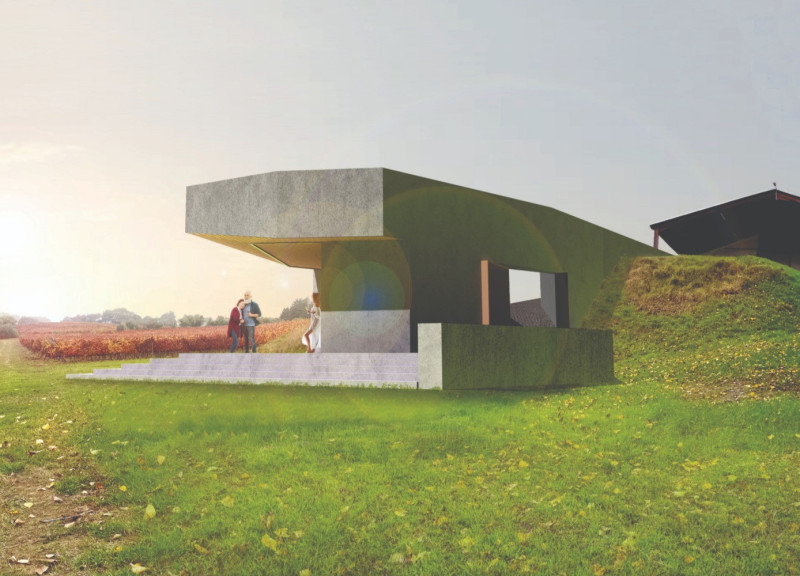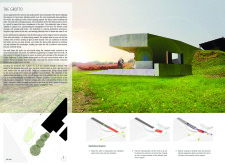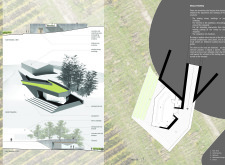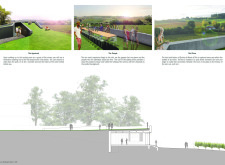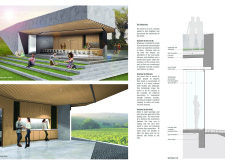5 key facts about this project
The winery is located in the picturesque setting of Quinta do Monte d’Oiro. It emphasizes a close relationship between the building and the surrounding landscape. The design facilitates an immersive experience, encouraging visitors to engage with the vineyard while highlighting the connection between the wine and its origin. By blending architecture with nature, the winery creates a welcoming environment for guests.
Concept and Structure
The design focuses on the visitor experience as a priority. A pathway made of stone pavers guides guests through the site, encouraging them to explore the vineyard. The colors of the landscape, especially during sunset, add to the visual appeal. An important feature of the design is the belvedere, positioned on the hillside. This lookout offers broad views of the vineyard rows, promoting reflection on the area's agricultural traditions.
Integration with Landscape
The placement of the winery within the hillside takes advantage of the natural contours of the land. This positioning enhances the views while creating spaces for social gatherings. The building's form is designed to align with the topography, reducing visual impact and maintaining the surroundings' beauty. Such integration ensures that the winery complements the landscape, presenting a harmonious atmosphere for visitors.
Materiality
The choice of materials plays a significant role in the overall design. Concrete is the main structural material, offering a clean finish that combines strength with visual appeal. Stone is used for pathways and terraces, which connects the building to the earth and the surrounding environment. Wooden elements throughout the interior provide warmth and comfort, enhancing the overall visitor experience while remaining practical.
Space and Connection
Glass is used thoughtfully, particularly in the tasting room's west wall. This aspect allows for large views of the landscape and provides a clear boundary between indoor and outdoor areas. By making the wine experience more engaging, guests are encouraged to interact with the vineyard visually and physically. The design emphasizes a careful balance of light with space, creating an atmosphere that reflects the essence of both the wine and the land from which it comes.


